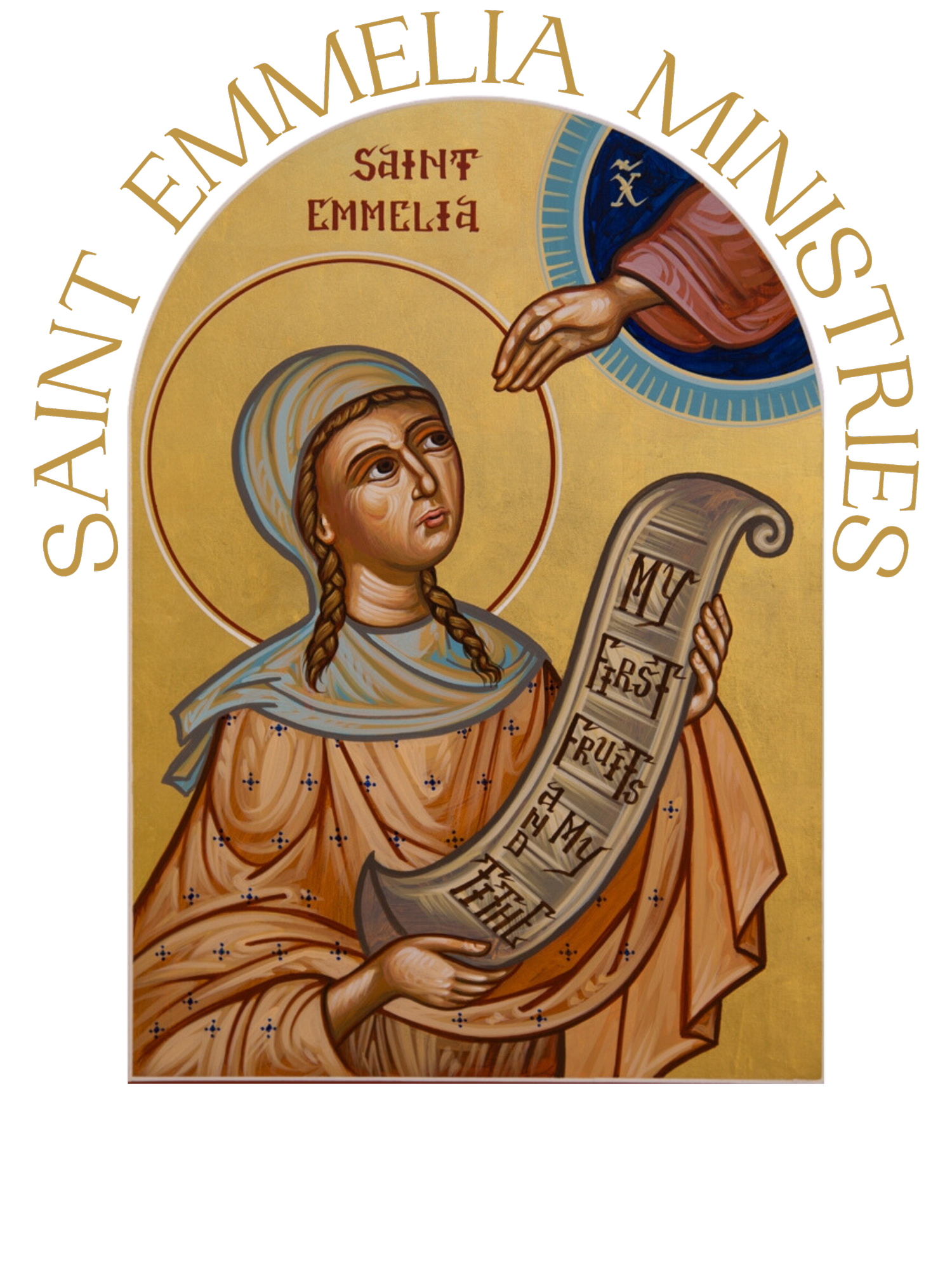by Mindi Popovich-Schneider, Saint Emmelia Ministries
As with almost everything else, there is a wide spectrum of opinions on headcoverings in the Church–where and when they should be worn, when girls should start wearing them, and why (or why not) they should be worn. Regardless of your opinions on headcoverings, if you have ever tried to wear one while wrangling children (or watched someone wear one while wrangling children!), you know that they can be difficult to keep in place. Between children tugging on the ends or trying to play peekaboo (just my toddler?) and the combined heat of a scarf and a little one, scarves can become a downright nuisance!
Here, I’ve collected six alternatives to the standard single loop or knot-under-the-chin styles. If you struggle with keeping your headscarf in place, or you’re interested in starting to cover your head, hopefully these methods will keep you cool as a cucumber (both literally and figuratively) during services.
The Bun (Rectangular scarf)
Put your hair into a bun at the nape of your neck.
Lay your scarf smooth and taut across your head.
Bring the ends around to the back of your head and criss cross them under your bun
Bring the ends up around your bun, wrapping them until you have only short tails left. You might want to tie the ends once more. Tuck the tails in.
The Faux-Bun (Square or rectangular scarf)
Note: If you have short hair or don’t care to put your hair in a bun for whatever reason, use this instead of the above tutorial!
Lay your scarf smooth and taut across your head.
Bring the ends around to the back of your head, bringing them together. You’ll want to adjust them so that they’re folded smoothly back over the bottom edge of the scarf; otherwise, the scarf will be too loose.
Using a hair-tie, gather the scarf into a “ponytail.” If you have long hair, you can gather it into your ponytail for an extra anchor.
Tie the tail into a bun. I like to twist the two sides together, then wrap the twist around the hair-tie and fasten with a second hair-tie, but your preferred method will work too!
If you’re worried about it sliding off, bobby pin the scarf behind your ears and under the bun.
The Grace Kelly (Square)
Note: While Grace Kelly’s silk scarves are iconic, I find that silky scarves still slip a lot with this style. When I use a cotton scarf, it stays in place perfectly.
Fold your scarf diagonally to make a triangle. Lay the long side across your head.
Wrap one end over the other and pull it through.
Pull both ends around to the back of your neck and knot them.
You can either pull the point of the triangle out over the knot (like a snood), make the knot into a more fashionable bow, or tuck the three ends under your collar.
The Rosie (Square)
Fold your scarf diagonally to make a triangle. Lay the point of the wide angle a little ways back from your hairline/forehead.
Bring the other two points to the top of your head–over the wide point–making sure to keep the scarf smooth and flat.
The ends into a tight knot, then tuck the tails under the edge of the scarf. Secure them to your hair with bobby pins, which shouldn’t be visible under the scarf.
The Trendsetter (Rectangular)
Put the middle of the scarf in front of your neck, wrapping the tails around the back and to the opposite side.
Tuck each end through the front loop of the scarf.
Pull the back part of the loop up and over your head
The Cottagecore (Make your own!)
Watch this quick and easy tutorial! This style works nicely because the ties are hidden under your hair, and they are easier to pin in place because they’re so thin.
Additionally, a simple triangle scarf (that is, NOT a square folded in half) also seems to stay in place very well.
Cut a triangle roughly 35”x14” with a hypotenuse of 22”. Roll the edges in once and sew to make your hem!
There you have it: six methods for effectively covering your head in church! Did I miss any styles? Let us know!

























